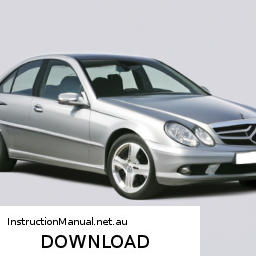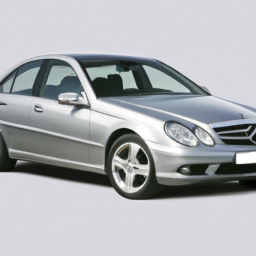
Replacing the fuel pump on a Mercedes-Benz S210 (also known as the E-Class, produced from 1995 to 2002) involves several steps and requires specific tools and materials. click here for more details on the download manual…..
- W210 connecting rod, piston
- E220 CDI Mercedes w210 Alternator Replacement – Water Cooled Turbo Removal Video : https://youtu.be/l9e1ImKyJiE On the Mercedes Benz e class e220 cdi you will find a water-cooled …
Below is a detailed guide with bullet points outlining each aspect of the process.
### Tools and Materials Needed:
– **Socket Set**: metric sockets (especially 10mm and 13mm) will be necessary for removing bolts and nuts.
– **Ratchet and Extensions**: To reach bolts in tight spaces.
– **Torque Wrench**: To ensure bolts are re-torqued to the manufacturer’s specifications.
– **Screwdrivers**: Both flathead and Phillips for various fasteners.
– **Pliers**: To help with hose clamps and electrical connectors.
– **Fuel Line Disconnect Tool**: Specifically designed for quick disconnect fittings.
– **Safety Goggles and Gloves**: Essential for protection while working with fuel.
– **Shop Towels/Rags**: To clean up spills and keep the workspace tidy.
– **New Fuel Pump**: Ensure it’s compatible with the S210 model.
– **New Fuel Filter** (optional): It’s a good practice to replace this at the same time.
– **Sealant or gasket Maker**: For resealing any connections if necessary.
– **Plastic Bag or Towels**: To cover fuel lines and prevent spills during the process.
### Preparation:
– **Safety First**: Disconnect the negative battery terminal to prevent any electrical hazards.
– **Relieve Fuel Pressure**: Remove the fuel pump relay or fuse and start the engine to run it until it stalls. This will relieve pressure in the fuel lines.
– **Locate the Fuel Pump**: The fuel pump is typically located in the fuel tank, accessed from under the rear seat or through an access panel in the trunk.
### Removal Process:
– **Access the Fuel Pump**:
– Remove the rear seat or access panel to reach the fuel tank.
– If applicable, disconnect any fasteners or screws holding the access cover in place.
– **Disconnect Electrical Connectors**:
– Carefully disconnect the electrical connector from the fuel pump. Use pliers if necessary to gently pull the connector apart.
– **Remove Fuel Lines**:
– Use the fuel line disconnect tool to separate the fuel lines. Be prepared for some residual fuel to spill out. Use shop towels to catch any spills.
– **Unbolt the Fuel Pump Assembly**:
– Using the socket set, remove the bolts securing the fuel pump assembly to the tank. Keep track of the bolts as you remove them.
– **Lift Out the Fuel Pump Assembly**:
– Carefully lift the fuel pump assembly out of the tank. Be cautious of the fuel float and any other Attached components.
### Installation of New Fuel Pump:
– **Prepare the New Fuel Pump**:
– Compare the new fuel pump to the old One to ensure they are identical. Replace any necessary components like the fuel filter if applicable.
– **Install the New Fuel Pump**:
– Lower the new fuel pump assembly into the tank. Ensure that it is seated properly and that the fuel float is in the correct position.
– **Reattach the Fuel Pump Assembly**:
– Secure the assembly with the bolts previously removed. Use a torque wrench to tighten to the manufacturer’s specifications.
– **Reconnect Fuel Lines**:
– Reattach the fuel lines, ensuring they are secure and properly seated. Use the fuel line disconnect tool if necessary.
and properly seated. Use the fuel line disconnect tool if necessary.
– **Reconnect Electrical Connectors**:
– Plug the electrical connector back into the fuel pump.
### Final Steps:
– **Replace Access Cover**:
– If you removed an access cover or the rear seat, reattach it securely.
– **Reconnect the Battery**:
– Reconnect the negative terminal of the battery.
– **Check for Leaks**:
– Before starting the vehicle, turn the ignition to the “ON” position (without starting) to prime the fuel system. Check for leaks around the fuel lines and pump.
– **Start the Engine**:
– Start the engine and let it idle. Monitor for any unusual sounds or leaks.
– **Test Drive**:
– Take the car for a short drive to ensure that the fuel pump is functioning correctly and that there are no issues.
### Clean Up:
– **Dispose of Old Parts**:
– Properly dispose of the old fuel pump and any hazardous materials.
– **Clean work Area**:
– Wipe down any spills and ensure your workspace is tidy.
By following these detailed steps, you should be able to successfully replace the fuel pump on a Mercedes-Benz S210. Always refer to the vehicle’s service manual for any specific torque specifications or additional instructions relevant to your model.
A receiver drier is a crucial component of a vehicle’s air conditioning (A/C) system, primarily responsible for filtering and storing refrigerant. It plays a pivotal role in maintaining the efficiency and longevity of the A/C system by ensuring that the refrigerant remains clean and free from moisture and contaminants. Typically located between the condenser and the expansion valve, the receiver drier serves multiple functions.
Firstly, it acts as a storage unit for refrigerant, allowing the system to maintain optimal pressure levels. When refrigerant exits the condenser, it is in a liquid state. The receiver drier collects this liquid refrigerant before it moves to the expansion valve, where it will be transformed into a low-pressure gas. This storage capability helps in managing the refrigerant flow, ensuring that the A/C system operates smoothly.
Secondly, the receiver drier contains a desiccant material that absorbs moisture. Moisture in the A/C system can lead to the formation of ice, corrosion, and other detrimental effects that can compromise the performance of components. By removing moisture, the receiver drier helps prevent these issues, thereby enhancing the reliability of the entire A/C system.
Additionally, the receiver drier is equipped with filters that capture debris and contaminants, further protecting the system from potential damage. Regular maintenance and replacement of the receiver drier are essential for optimal A/C system performance, particularly if the system has been opened for repairs or if a refrigerant leak has occurred. Overall, the receiver drier is an indispensable component that ensures the effective operation of a vehicle’s air conditioning system.